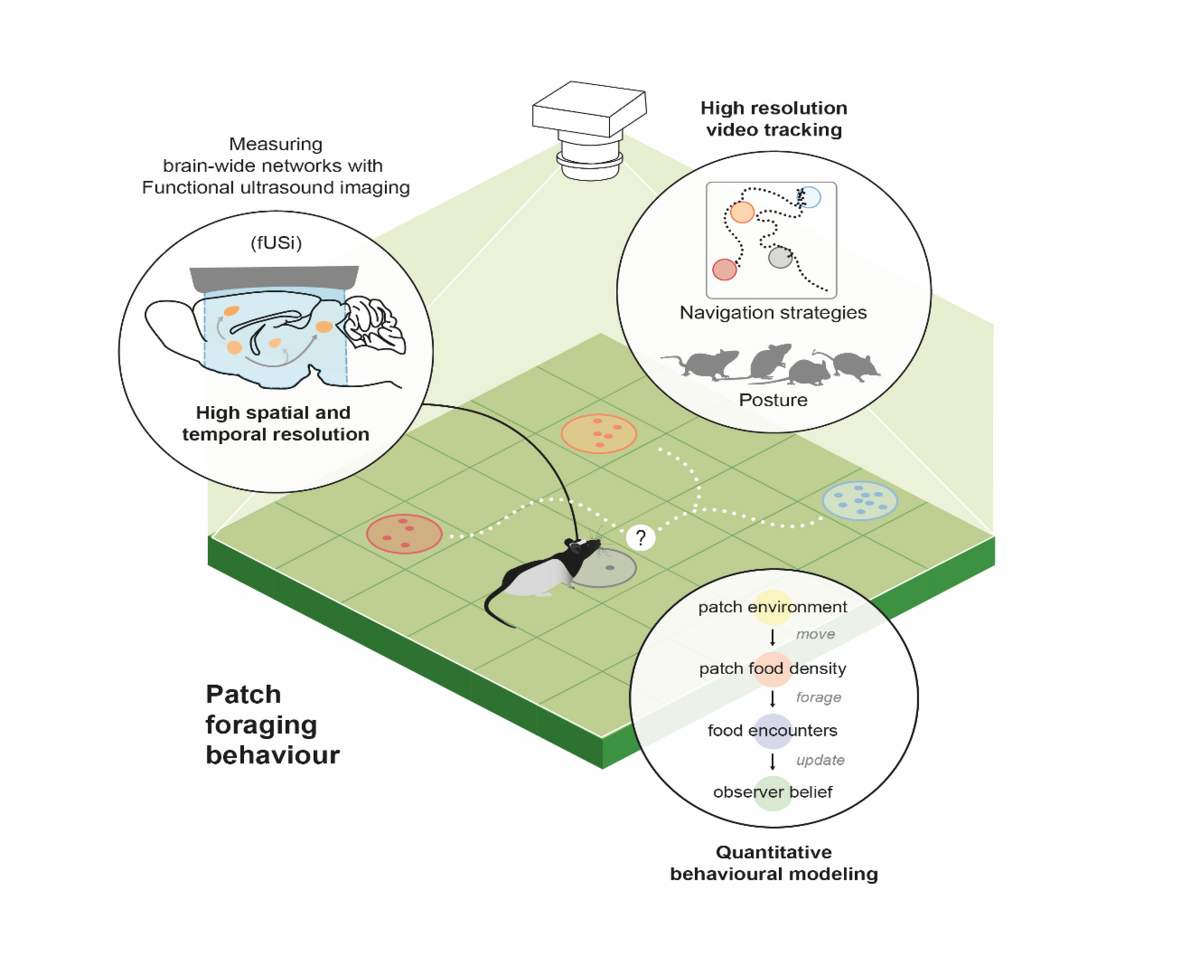
Copyright: Gil Costa
Environmental uncertainty shapes rat foraging behaviour in large scale environments
In nature, rats have to survive in uncertain and harsh environments. They should therefore employ decision strategies that maximize their survival in those environments. The project Environmental uncertainty shapes rat foraging behaviour in large-scale environments aims to understand how uncertainty shapes the foraging strategies of rats.
To achieve this, the project team pursues two different approaches: theoretical and experimental. “On the theoretical side, we are developing models to infer the decision strategies that animals employ in different environments using approaches from stochastic processes and decision-making models used in systems neuroscience,” explains Ahmed El Hady and continues: “These models are meant to be applied to a variety of animal species and not only used for rats.” On the experimental side, the team is developing a foraging behavioural paradigm in the Imaging Hangar to approximate rats’ natural foraging in the laboratory.
“By combining these theoretical and experimental approaches, we can lay the foundation for understanding how rats forage in a large naturalistic environment,” says Ahmed El Hady. To date, the team has been able to finalize the theoretical models and apply them to foraging data. In the next steps of the project, they will be able to use these models to design foraging experiments in the Imaging Hangar. Using the Imaging Hangar is what excites Ahmed El Hady the most: “Using this facility allows me to do experiments that cannot be done elsewhere than Konstanz.” He is certain that the large-scale foraging experiments in the Imaging Hangar will allow researchers to investigate brain-wide dynamics underlying natural behaviour, for example, using the recently developed functional ultrasound imaging.
Publications
- Kilpatrick, Z. P., Davidson, J. D., & El Hady, A. (2021). Uncertainty drives deviations in normative foraging decision strategies. Journal of the Royal Society Interface, 18(180), 20210337.
- Bidari, S., El Hady, A., Davidson, J. D., & Kilpatrick, Z. P. (2022). Stochastic dynamics of social patch foraging decisions. Physical review research, 4(3), 033128.
